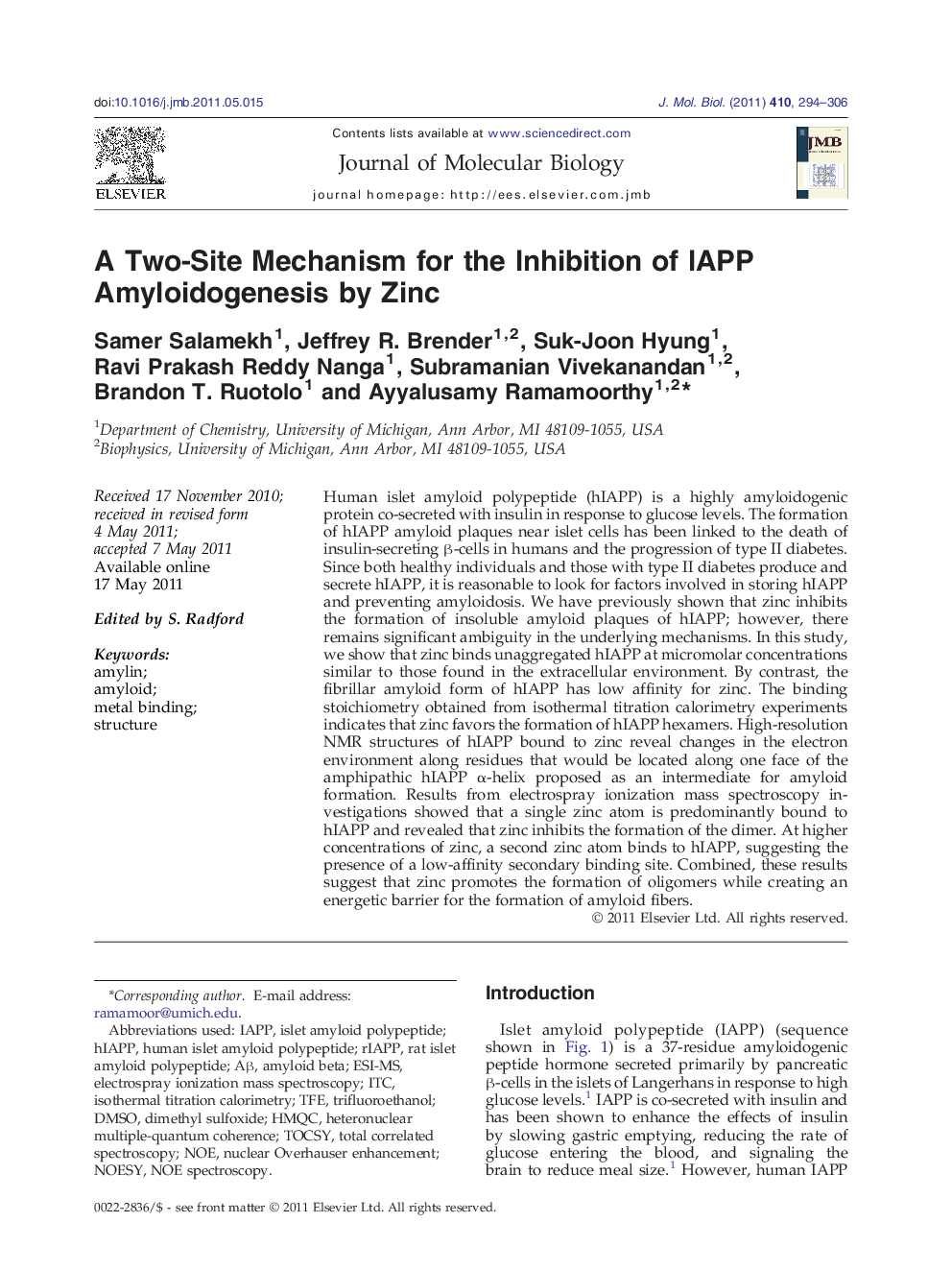| کد مقاله | کد نشریه | سال انتشار | مقاله انگلیسی | نسخه تمام متن |
|---|---|---|---|---|
| 2185196 | 1095964 | 2011 | 13 صفحه PDF | دانلود رایگان |

Human islet amyloid polypeptide (hIAPP) is a highly amyloidogenic protein co-secreted with insulin in response to glucose levels. The formation of hIAPP amyloid plaques near islet cells has been linked to the death of insulin-secreting β-cells in humans and the progression of type II diabetes. Since both healthy individuals and those with type II diabetes produce and secrete hIAPP, it is reasonable to look for factors involved in storing hIAPP and preventing amyloidosis. We have previously shown that zinc inhibits the formation of insoluble amyloid plaques of hIAPP; however, there remains significant ambiguity in the underlying mechanisms. In this study, we show that zinc binds unaggregated hIAPP at micromolar concentrations similar to those found in the extracellular environment. By contrast, the fibrillar amyloid form of hIAPP has low affinity for zinc. The binding stoichiometry obtained from isothermal titration calorimetry experiments indicates that zinc favors the formation of hIAPP hexamers. High-resolution NMR structures of hIAPP bound to zinc reveal changes in the electron environment along residues that would be located along one face of the amphipathic hIAPP α-helix proposed as an intermediate for amyloid formation. Results from electrospray ionization mass spectroscopy investigations showed that a single zinc atom is predominantly bound to hIAPP and revealed that zinc inhibits the formation of the dimer. At higher concentrations of zinc, a second zinc atom binds to hIAPP, suggesting the presence of a low-affinity secondary binding site. Combined, these results suggest that zinc promotes the formation of oligomers while creating an energetic barrier for the formation of amyloid fibers.
Graphical AbstractFigure optionsDownload high-quality image (95 K)Download as PowerPoint slideResearch Highlights
► IAPP has micro- and millimolar-affinity binding sites for zinc. hIAPP fibers display a decreased affinity for zinc compared to the monomeric form.
► hIAPP binds to zinc as a hexamer by minimizing unfavorable steric interactions.
► The displacement of zinc precedes the formation of mature fiber.
► Zinc inhibits the formation of the hIAPP dimer and mature fiber while promoting oligomers.
Journal: Journal of Molecular Biology - Volume 410, Issue 2, 8 July 2011, Pages 294–306